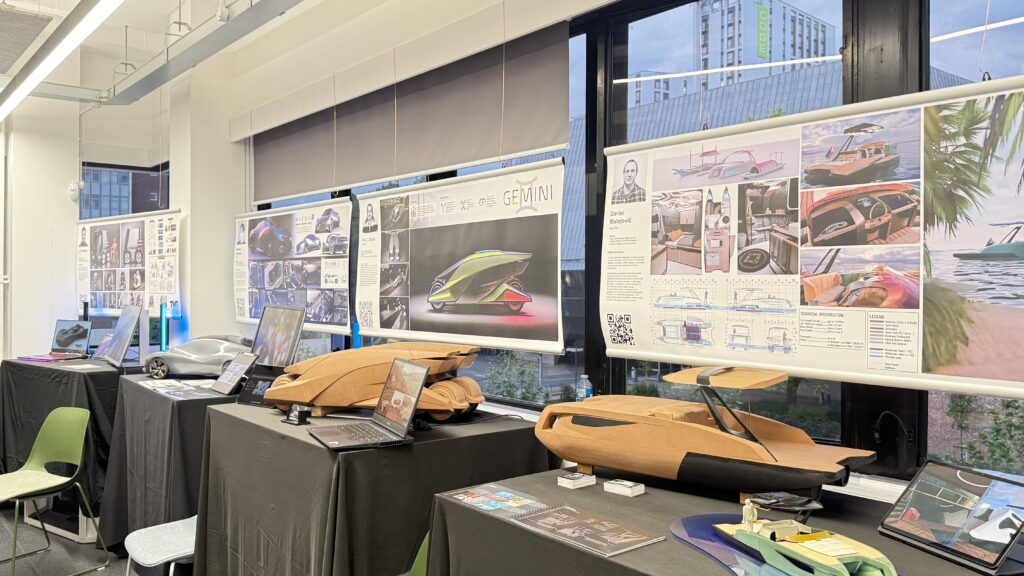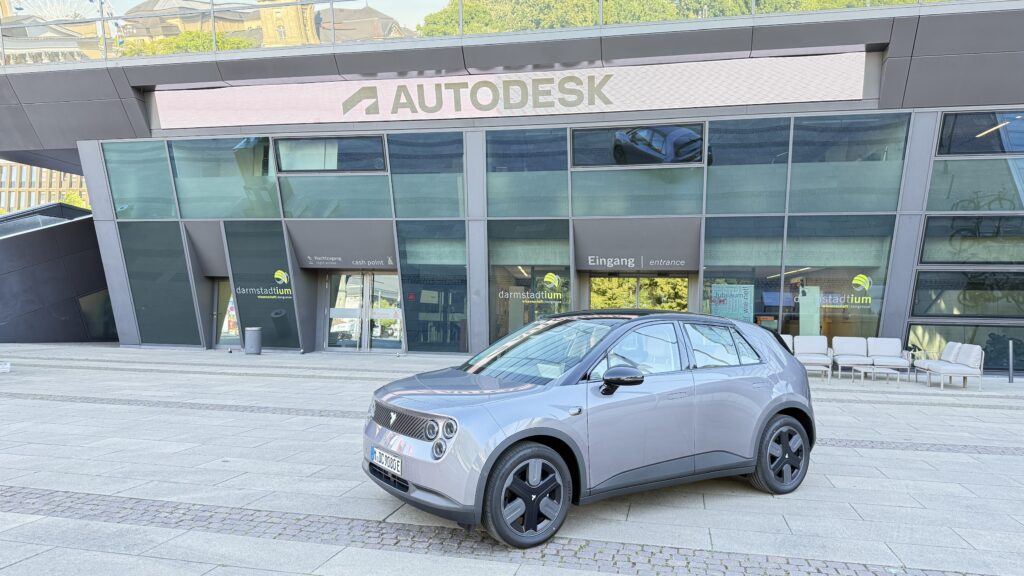
How do you recognize a pattern? It is the rule of 3. First, I was judging final presentations last month of second year Coventry University students. Second, I was back again in Coventry, this time at the annual end of year student show. And third, a completely unknown student reached out to me online and asked for some advice. As a bonus, we were knee deep in the preparations for the 2025 Automotive Innovation Forum and our first ever student contest. After mixing all of this in my head, I decided to do what I do best, put thoughts on my keyboard. I have shared my thoughts around design education before but it bears repeating. So, to all the students I talked to and to any other student out there, here are some nuggets of wisdom.
The Elephant
The big elephant in the automotive design room (as in many other rooms) is artificial intelligence. It is unlike any tool we’ve ever had, but that’s what it remains at its very core, a tool. No matter how powerful it becomes, its value depends on how you use it. Here’s the truth: those who ignore it risk being replaced by those who embrace it. In the meantime, focus on what you want to become. If you want to be a designer, nothing will ever replace sketching (yes, nothing). Be versatile and pick something else that can help you (like 3D modelling). And finally, at a minimum, familiarize yourself with the mainstream A.I. tools. They might supercharge your workflow and if you can integrate A.I. into your work meaningfully, you’ll have a powerful edge.
The Definition
Speaking of A.I., here is the definition it gives you about Design:
“Design, at its core, is the process of planning and creating something to solve a problem or fulfill a need.”
When companies shop for new talent, they are looking for people to hire who can help them solve their problems. It is in design obviously but also in sketch modelling, CAS modelling, Class A modelling, rendering or animation. Everybody is a hot shot exterior designer but keep in mind those other careers: they are very well paid and in demand. If you do not fit the profile exactly, they are looking for people with the right attitude. When I was in the industry, there was one thing I was looking for in particular in a student. I can teach you whatever you need to learn. One thing that cannot be taught? Hustle.

“The hustle brings the dollar.” – Ross Simmonds.
Do you stop at the first problem you encounter or do you look for ways around it? Yes, you will make pretty sketches and models along the way but they all serve the same purpose, to solve problems. The beauty of good design is that your interviewers don’t even have to like what your design looks like: they only need to understand your reasoning and your solution.
The Story
What do a good movie, a good book or a good design have in common? They tell a good story. The key to understanding the problem is the client’s brief. What problem are you going to solve? Use it to your advantage. One of the best stories I have seen from the students this year is the story of an outdoor influencer (who else could it be but an influencer). What does he (or she) need? He needs to go outdoors, somewhere not likely easy to access, and he will probably spend the weekend in the wilderness. What does he need in a vehicle? He needs to carry a kayak. A cooking corner and a shower would also help. What happens to the car when he is down the river in a kayak? Make it driverless. This vehicle has to solve all these problems.
The Audience
Sometimes you have to underline the obvious. To this day, I am still stupefied to see final work not done not in Autodesk software, when Autodesk is co-sponsoring the project. The point is not to get into a pointless petty match about software. It is to tell students to pay attention, to your sponsors and to your audience. Superserve your audience and show some hustle and some initiative. Your final model does not need to be in Class A to the latest radius. All you have to show is interest, good will and to be fair, the majority of the teams have done it. One of the teams showed a very simple VRED animation of an interior but it was very effective in telling the story and solving the problems.
Just Do It
Having been around shows for a while, I have seen the arms race up close. When I taught in Detroit, around late April, an army of industry clay modellers would descend on CCS to help finish the seniors’ models. Then, students started sending their digital files to China to get fully painted and lit models back. A pro comes in and puts the last finish on your clay model: that’s one thing. To direct a Hollywood short movie of your car is another. Think I’m exaggerating? This casts doubts on your entire body of work. Did you model your own car in 3D? Did you commission the design? My student hard models sucked hard (that is why I do what I do) but they were all mine. How can you learn about the subtlety of surfacing if you never do it yourself, in clay or in 3D? Why bother going to school if you hire ILM? Especially in the age of A.I., there is tremendous learning and value in learning by doing.
Finally, someone asked me a question. “How do you get started with Alias? It is scary.” And my answer was “yes, it is. And you should embrace it”. Students are in a magical period of their lives where they are supposed to take risks, to experiment and to jump into the unknown. And that brings us to the final point.
Nothing worth pursuing comes easy.
If you want to bulk up, going to the gym is going to hurt. Nothing will be given to you. You will have to earn your spot in one of the most competitive industries ever through blood, sweat and tears, just like yours truly had, and as legions have done before me. Get uncomfortable, get to work, go after it, hustle. When you embrace this feeling of “being uncomfortable”, it is the way of the universe to tell you you are doing something right.
“If you are not willing to risk the unusual, you will have to settle for the ordinary” – Jim Rohn
Good luck out there.